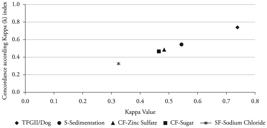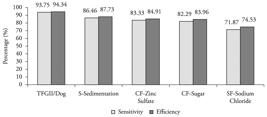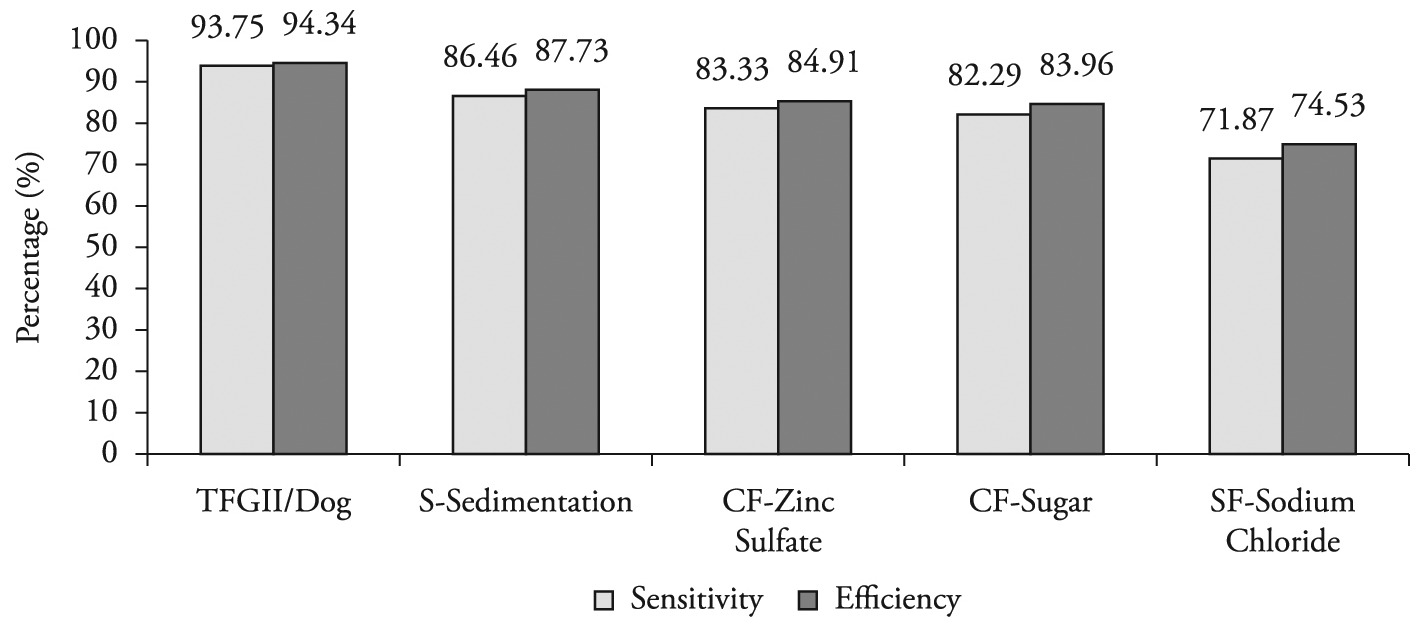Differences in the efficacy of diagnostic techniques employed in the parasitological examination of feces are a limiting factor of this laboratory procedure in the field of Veterinary Parasitology. To verify advances in this type of examination in dogs, we conducted a study using a new technique (TFGII/Dog). Fifty naturally infected dogs were housed in individual stalls, and their feces were evaluated comparatively using this technique and four other conventional techniques. The TFGII/Dog showed high levels of sensitivity and efficiency, surpassing the diagnostic accuracy of the other techniques with a kappa concordance index of 0.739 (Substantial), as opposed to 0.546 (Moderate), 0.485 (Moderate), 0.467 (Moderate), and 0.325 (Fair) of the Spontaneous-Sedimentation, Centrifugal-Flotation in Saturated Zinc Sulfate Solution, Centrifugal-Flotation in Saturated Sugar Solution, and Spontaneous-Flotation in Saturated Sodium Chloride Solution techniques, respectively. The combination of positive results of all techniques comprises eight genera of parasites, with Ancylostoma spp. predominating among helminths, and Cystoisospora spp. among protozoa. The TFGII/Dog technique showed better diagnostic performance, and can therefore be considered an important tool for optimizing the results of laboratory routines and for the control of canine gastrointestinal parasites.
Parasitological techniques; dog; helminths; protozoa; TFGII/Dog

 Thumbnail
Thumbnail
 Thumbnail
Thumbnail

